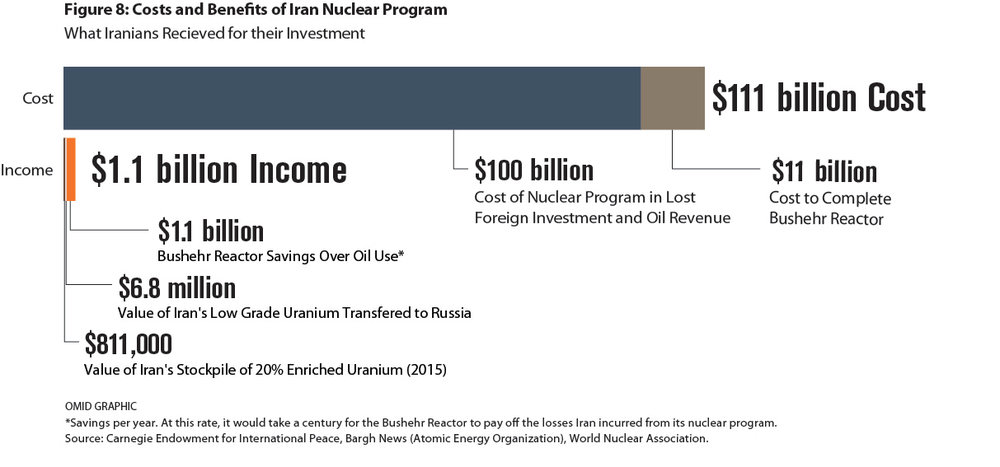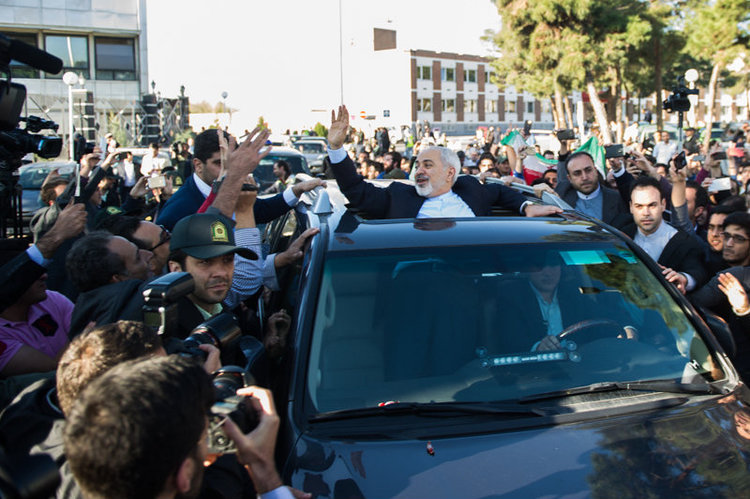THE OIL AND GAS MAFIA
In the past, colonial powers did not recognize the Iranian people’s sovereign right over their oil. They systematically syphoned the profits into their own hands, leaving little for Iranians.
Today, the institutions in charge of Iranians’ oil and gas under the supreme leader’s supervision (the Petroleum Ministry, the NIOC and the Central Bank) fail to stop oil from being secretly siphoned out of Iran. To put it bluntly, Iran’s arteries have been severed. Oil is pumped out of the country, but money does not return into the country. This can’t be blamed on sanctions. It is because of corruption—corruption by design.

As in the days of the Anglo-Iranian Oil Company, the key to the people’s prosperity lies in taking back control of their resources from the hands of Iran’s oil and gas mafia.



- Further reading: Pages 21-25 of Where Is My Oil? Corruption in Iran's Oil and Gas Sector
THE $100 BILLION SANCTION DISTRACTION
While Iran’s nuclear program accounts for less than 1 % of Iran’s energy use, and Iran has some of the world’s most abundant oil and gas reserves, why was the regime so eager to let sanctions be implemented?
Even if there had been no sanctions, the economic benefits of nuclear power were dubious at best. As it were, the regime fought for it against the world as if it were the lifeblood of Iran. What did the Iranian people get in exchange for this $100 billion loss? The Iranian people were forced to assume the economic and political cost of sanctions. What the regime did not want people to see, however, was how sanctions made it easier to steal Iranians’ oil, so an international oil racket profited while the people suffered.

- Further reading: Pages 28-31 of Where Is My Oil? Corruption in Iran's Oil and Gas Sector
NUCLEAR DEAL
Climbing out of such a hole will not be easy. Without eliminating corruption, it will be impossible.
After signing the nuclear deal in April 2015, Iranian foreign minister, Javad Zarif, was granted a hero’s welcome upon his return to Tehran. The jubilant crowds gathering at Mehrabad airport hoped that the deal would not only avert the threat of war, but end decades of international isolation and economic hardship.
But, according to former U.S. Treasury Secretary Jack Lew, sanctions had cost Iran “more than 160 billion dollars” in oil revenue since 2012, cutting Iran’s oil exports by 60%, triggering a 50% decline in the value of the rial. Lew claimed that in the last eighteen months of the negotiations, sanctions cost Iran $70 billion in revenue—a figure that translates into roughly $3.9 billion per month, $130 million per day—$5.4 million per hour.
Photo by Borna Ghasami, ISNA

- Further reading: Pages 37-42 of Where Is My Oil? Corruption in Iran's Oil and Gas Sector





